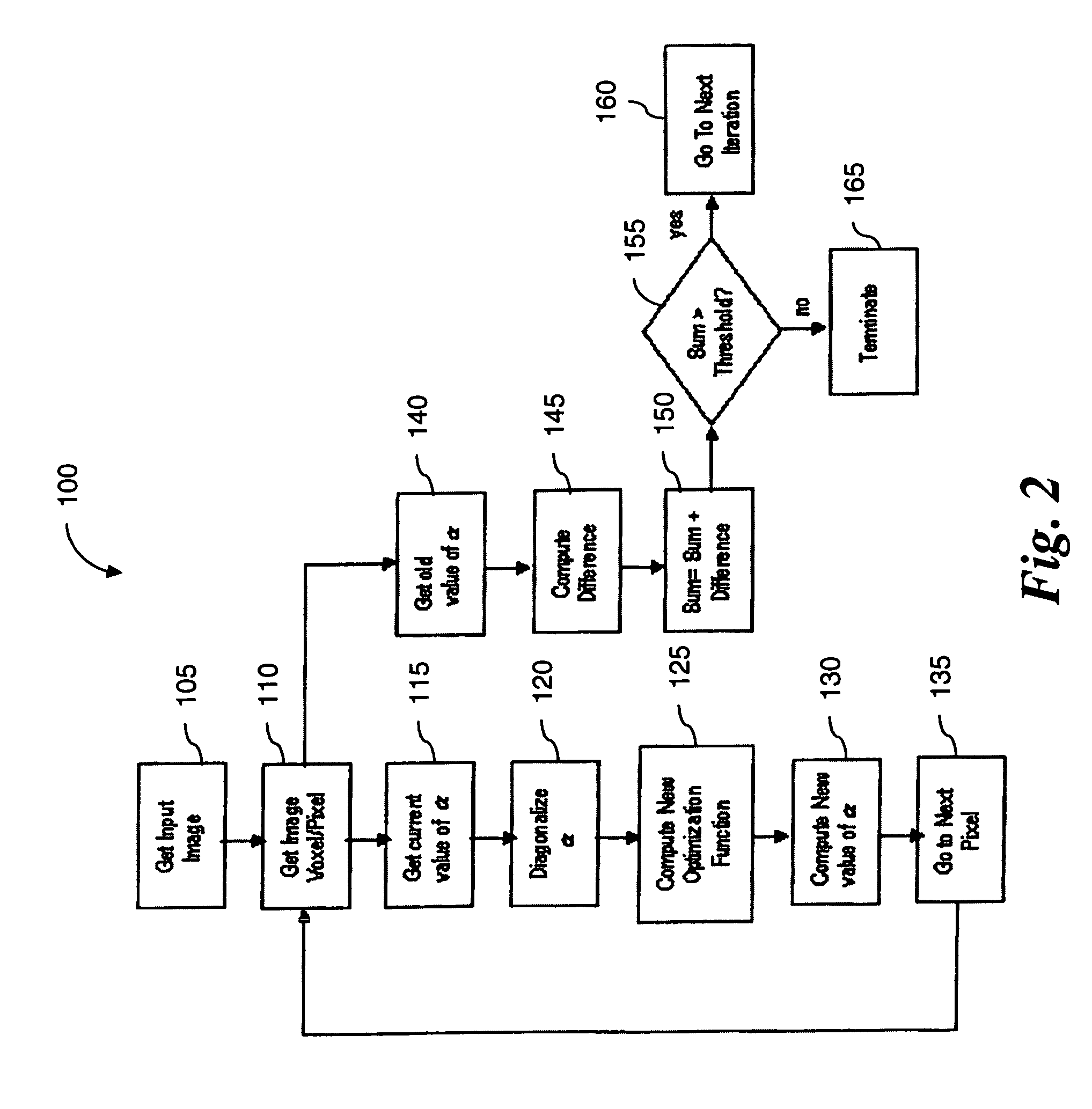Noise reduction in diffusion tensor imaging data using bayesian methods
a diffusion tensor and imaging data technology, applied in the field of magnetic resonance imaging, can solve the problems of large error-prone methods for calculating diffusion tensor data from raw diffusion-weighted images, particularly noise-sensitive diffusion-weighted images from which the dti is inferred, and errors in the major eigenvector direction. to achieve the effect of reducing noise in diffusion tensor imaging data
- Summary
- Abstract
- Description
- Claims
- Application Information
AI Technical Summary
Benefits of technology
Problems solved by technology
Method used
Image
Examples
Embodiment Construction
[0033]White matter image analysis is of fundamental importance in understanding brain function because of the anatomical network of connections that it establishes. There are many disorders of the white matter of the brain, and disorders where white matter plays a crucial role, including de-myelinative disorders (e.g. multiple sclerosis), infectious diseases (e.g. AIDS dementia, encephalitis), inflammatory diseases (e.g. lupus), traumatic brain injury, cancer, epilepsy, Alzheimer disease and post-surgical disorders. There are also many conditions where white matter is now being understood to play an important role, including drug abuse, mood disorders, schizophrenia and autism. In the evaluation of the methods developed here, the inventor has focused on autism because of the significant role of white matter in that debilitating disorder.
[0034]The invention is a modular framework and method and is deployed as software as an application program tangibly embodied on a program storage d...
PUM
 Login to View More
Login to View More Abstract
Description
Claims
Application Information
 Login to View More
Login to View More - R&D
- Intellectual Property
- Life Sciences
- Materials
- Tech Scout
- Unparalleled Data Quality
- Higher Quality Content
- 60% Fewer Hallucinations
Browse by: Latest US Patents, China's latest patents, Technical Efficacy Thesaurus, Application Domain, Technology Topic, Popular Technical Reports.
© 2025 PatSnap. All rights reserved.Legal|Privacy policy|Modern Slavery Act Transparency Statement|Sitemap|About US| Contact US: help@patsnap.com



